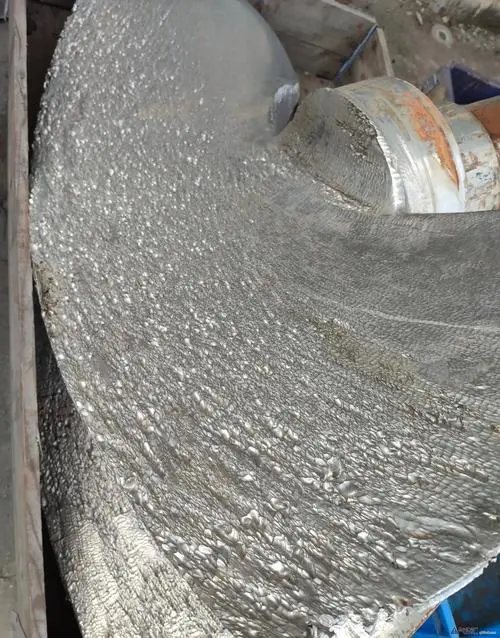Effects of fluid physical properties on cavitation in centrifugal pumps
The influence of fluid physical properties on centrifugal pump cavitation mainly includes: purity, pH value and electrolyte concentration of the transported fluid, amount of dissolved gas, temperature, kinematic viscosity, vaporization pressure and thermodynamic properties.
(1) The influence of purity (concentration of solid particles). The more solid impurities contained in the fluid, the more cavitation nuclei will be produced. Thereby accelerating the occurrence and development of cavitation.
(2) Effects of pH value and electrolyte concentration The cavitation mechanisms of centrifugal pumps that transport polar media (such as ordinary water pumps) and centrifugal pumps that transport non-polar media (pumps that transport organic matter such as benzene and alkanes) are different. . The cavitation damage of centrifugal pumps transporting polar media may include mechanical action, chemical corrosion (related to the pH value of the fluid), and electrochemical corrosion (related to the fluid electrolyte concentration); while the cavitation damage of centrifugal pumps transporting non-polar media There may only be a mechanical effect.
(3) Influence of gas solubility Foreign studies have shown that the dissolved gas content in the fluid promotes the generation and development of cavitation nuclei.
(4) Effect of gasification pressure Research shows that as the gasification pressure increases, cavitation damage first increases and then decreases. Because as the gasification pressure increases, the number of unstable bubble nuclei formed in the fluid also continues to increase, which causes an increase in the number of bubble bursts, an increase in shock wave intensity, and an increase in the cavitation rate. However, if the gasification pressure continues to increase and the number of bubbles increases to a certain limit, the bubble group will form a "layer separation" effect, preventing the shock wave from traveling and weakening its intensity, and the degree of damage caused by cavitation will gradually decrease.

(5) Effect of temperature. Changes in temperature in the fluid will cause large changes in vaporization pressure, gas solubility, surface tension and other physical properties that affect cavitation. It can be seen that the influence mechanism of temperature on cavitation is relatively complex and needs to be judged based on the actual situation.
(6) Effect of surface tension When other factors remain unchanged, reducing fluid surface tension can reduce cavitation damage. Because as the surface tension of the fluid decreases, the intensity of the shock wave generated by bubble collapse weakens, and the cavitation rate decreases.
(7) Influence of liquid viscosity: The greater the viscosity of the fluid, the lower the flow rate, the fewer the number of bubbles reaching the high-pressure area, and the intensity of the shock wave generated by the bursting of bubbles decreases. At the same time, the greater the viscosity of the fluid, the greater the weakening of the shock wave. Therefore, the lower the viscosity of the fluid, the more serious the cavitation damage will be.
(8) The influence of liquid compressibility and density. As the fluid density increases, the compressibility decreases and cavitation loss increases.




